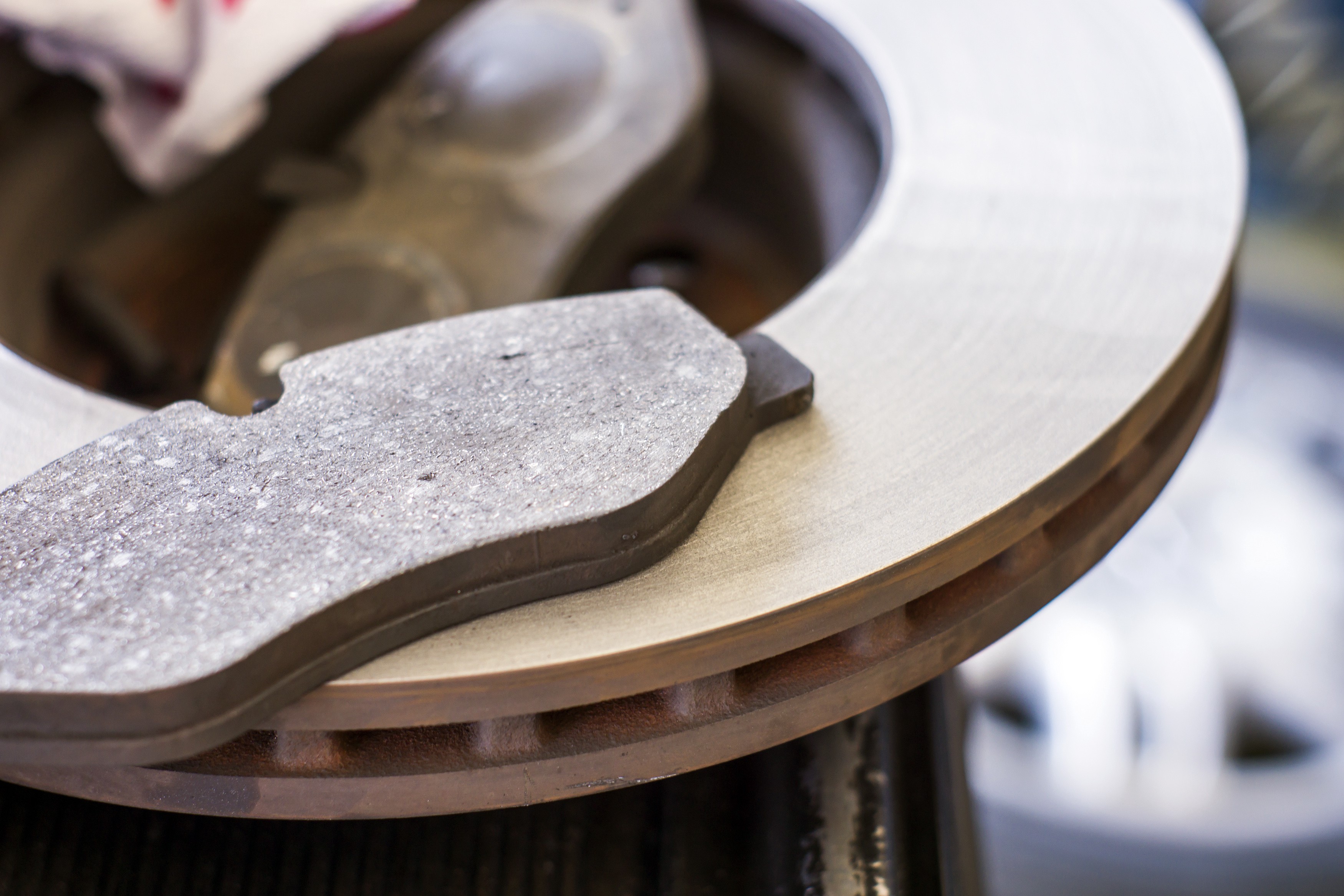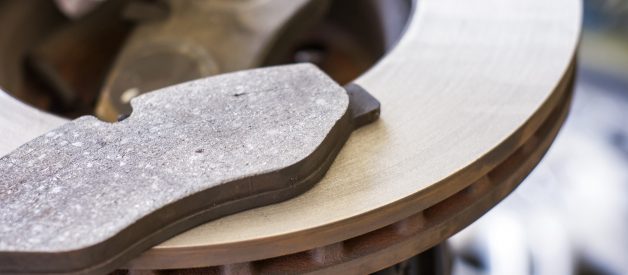By Michael Ales
 New front brake disks and pads for a modern vehicle
New front brake disks and pads for a modern vehicle
Updated: February 12th, 2020
Your car does zero to sixty with amazing speed and hugs every curve on a winding mountain road. Your truck has the torque to drag a railroad car down the track. Your utility vehicle sports the ability to climb a rocky hillside in the afternoon and get you to a PTA meeting in the evening. Of course none of it matters ? how fast you can drive or how heavy your payload might be ? if your vehicle is not able to stop effectively.
The brakes are the most important safety feature of your car, truck, or SUV. No matter what, you have to be able to stop. And whether you are hauling construction supplies to a job site or your kids to a soccer game, your brakes should provide safe stopping power every time you ask them to.
Most vehicles today feature two-wheel or four-wheel disc brakes. In a disc brake system, hydraulic fluid in the brake lines exerts pressure on the calipers when you step on the pedal. This force creates friction between the brake pads (inside the caliper) and the rotor, or disc, attached to the wheel. The friction causes the wheels to slow and stop.
Over time the brake pads wear down and need to be replaced. One choice for replacement pads would be to stick with the manufacturer?s recommended pads. But there are other aftermarket options to choose from, each with its own set of characteristics. There is no perfect brake pad for all applications. Every option is a compromise between price, performance, noise, and wear on the braking system.
What kinds of brake pads are available?
In years past, the friction material on brake pads was made from asbestos because it was durable, resistant to heat, and inexpensive. Of course, once asbestos was found to cause health and environmental problems, new types of friction materials were developed. All brake pads are not the same. Each type of brake pad employs a different type of friction material, each with its own set of characteristics.
Organic brake pads were created to replace asbestos pads. Also known as non-asbestos organic (or NAO), these pads are made of materials such as rubber, carbon, glass, fiber, and even Kevlar, all mixed with resin to bind them together. This is the manufacturer?s pad of choice for most new cars sold in the United States. Organic pads are the least expensive option. They are generally soft, quiet, and gentle on the brake system. A good fit for regular daily driving.
But organic brake pads wear down more quickly than some other types of pad. They also require that considerable pressure be applied to the brake pedal. And they create a lot of messy brake dust. While organic brake pads may be an inexpensive and safe choice for all-around daily driving, they may not be the best option for performance applications.
The most widely-used alternatives to organic pads fall into two categories: ceramic brake pads and semi-metallic brake pads.
Ceramic Brake Pads
Coming in as the most expensive option for replacement brake pads are ceramic pads. Ceramic pads are quiet and last the longest. Made from durable ceramic materials mixed with copper fibers, they are stable over a wide range of temperatures and they produce the least brake dust. They make for a firm brake pedal and yet are gentle on the brake system. Besides high cost, other downsides to ceramic pads are that they do not absorb heat well in extreme braking circumstances (this can cause excessive heat and wear to the rest of the braking system) and they do not work as well in the cold. Ceramic brake pads are a great choice (albeit a little pricey) for comfortable and quiet daily driving.
Semi-Metallic Brake Pads
If your vehicle or your driving habits tend to be extreme, your choice might be semi-metallic brake pads. Made of a high percentage of steel, iron, copper, and other metals, these pads are durable, heat resistant and provide the most stopping power. They also work well over a wide range of temperatures and absorb heat well, keeping the brake system cooler. Semi-metallic pads last longer than organic pads, but not as long as ceramics and they are priced somewhere in between.
The higher-performance capabilities of semi-metallic brake pads offer a trade-off. They are more aggressive and cause more wear on the brake rotors than other pads. They also tend to be noisier and produce a good deal of brake dust. But they are perhaps the best all-around choice for brake pads if you don?t mind the noise and the mess. Semi-metallic pads are certainly the best choice if you like speed, are prone to extreme or sudden braking, or are pulling a heavy weight.
So, if you need to have your brake pads changed, have a conversation with Hogan & Sons Tire and Auto in South Riding about which type of brake pad is right for you: the all-around entry-level of organics, the quiet comfort of ceramics, or the peak performance of semi-metallics.
Hogan & Sons Tire and Auto| Author: Mike Ales | Copyright
This article is intended only as a general guidance document and relying on its material is at your sole risk. By using this general guidance document, you agree to defend, indemnify and hold harmless Hogan & Sons Tire and Auto and its affiliates from and against any and all claims, damages, costs and expenses, including attorneys? fees, arising from or related to your use of this guidance document. To the extent fully permissible under applicable law, Hogan & Sons Tire and Auto makes no representations or warranties of any kind, express or implied, as to the information, content, or materials included in this document. This reservation of rights is intended to be only as broad and inclusive as is permitted by the laws of your State of residence.


